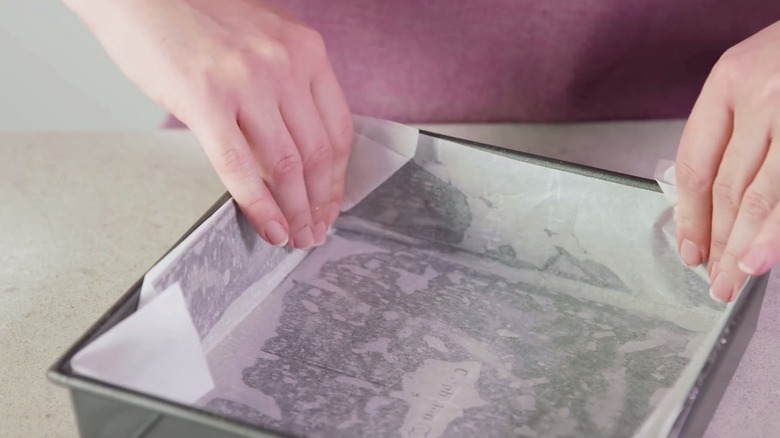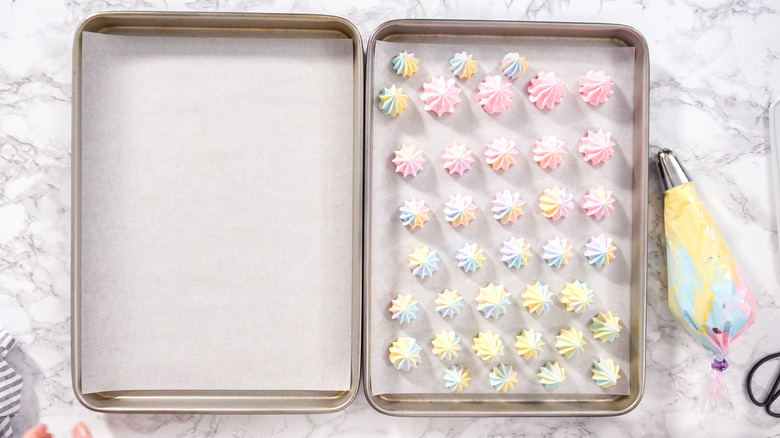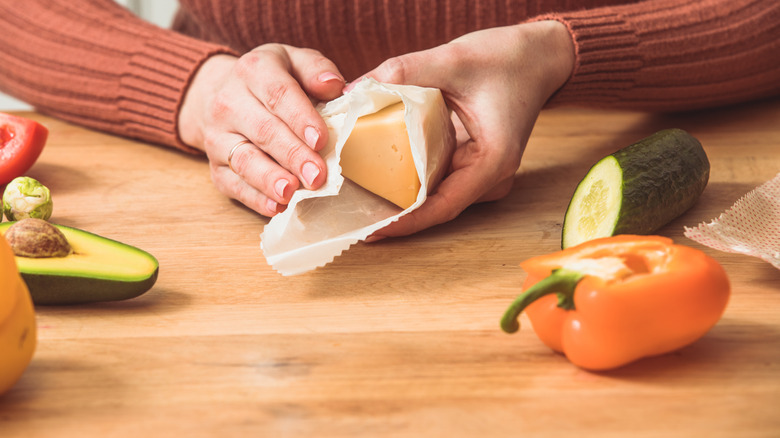Parchment Paper Vs. Wax Paper: When To Use Each
Baking has been experiencing a heyday recently. NPR notes that in the past year or so, "baking, frying, and trying" has taken a huge upturn. And while some have been working on their baking and cooking skills for years, there are still some mysteries home cooks and bakers have to continuously look up online. One of those involves the great debate: wax paper or parchment. It's been a well established convention that both parchment paper and wax paper are utilized when it comes to pastries, but do you really know exactly how to use each to the best of their ability?
For example, did you know that wax paper shouldn't be used in the oven? Wide Open Eats notes that it can even lead to fires. Southern Living explains that while the two may look similar, wax paper is covered in a thin wax coating on both sides, making it ideal for preventing food from sticking to surfaces, but not so great for high heat. Parchment paper, on the other hand, is also "moisture-resistant and non-stick," but in a way that can be utilized in baking and cooking.
What's the deal with parchment paper?
What exactly is parchment paper made of? The Spruce Eats explains it is a thin paper that's "coated with silicone," so it has a resistance to heat and repels anything sticky. It tends to come in one of two forms, unbleached and bleached (similar to flour), and can be bought as a long sheet to be shaped by the baker or cook, or in "pre-cut sheets" for ease and convenience.
Common uses for parchment paper, according to The Spruce Eats, are to line pans for baking, which is why you'll often see cookie recipes tell you to line your baking sheet with parchment paper. You can also layer parchment paper between goods that have already been baked so they don't stick together, use it as a piping bag for icing, and to cook food "en Papillote," meaning enclosing meat or fish with seasonings in a paper bag-like creation in order to get a more healthy cook and steam it from the inside.
The Pioneer Woman notes some of parchment paper's many benefits, including helping to produce more even baking by regulating oven temperature. It also has cosmetic benefits: placing parchment paper under your baked goods will help you lift your creation out of a pan without damaging the bottom or the edges.
So why wax?
Wax paper, like parchment paper, is also coated, but its coating is wax, not silicone, making it unsafe for high heat environments. According to the USDA, it is "triple-waxed," which can cause the paper to start smoking when heated. Interestingly, they also credit Thomas Edison as its inventor and note that while wax paper can't be used on a typical baking sheet, it can be utilized for cakes as the batter will cover it and smother any potential smoke. Wax paper can also be used in the microwave, per the USDA.
Other smart uses for wax paper, notes One Good Thing by Jillee, are covering ice cream to prevent freezer burn, wrapping cheese to keep it fresh, covering dough so it doesn't stick to the rolling pin, and even encircling a cork to make it more easily fit into an open bottle.
Clearly wax paper and parchment paper both have their uses and utilities, but just make sure you're using them to the best of their abilities. With the right know-how, you'll be on your way to stress-free baking and food storage in no time.


